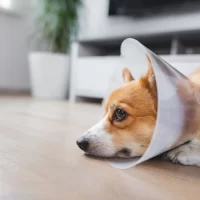- Why Neutering Is Important for Dogs
- Immediate Care After Neutering
- Managing Pain and Discomfort Post-Surgery
- Monitoring Your Dog’s Recovery
- Exploring Hidden Brook Veterinary for Post-Surgery Care
Why Neutering Is Important for Dogs
Neutering is an essential procedure for managing pet overpopulation, improving your dog's health, and reducing certain behavioral problems. For male dogs, neutering involves the removal of the testes, which reduces the risk of testicular cancer, prevents certain prostate issues, and decreases the likelihood of unwanted behaviors such as aggression, marking, and roaming.
While neutering is a common procedure with many benefits, proper care during recovery is crucial to ensure your dog heals well and remains comfortable. Understanding what to expect and how to care for your dog after neutering will help ease the process for both you and your pet.
Immediate Care After Neutering
After neutering, your dog will require special attention during their recovery. Here are the immediate steps you should take to care for your dog post-surgery:
- Provide a Quiet Space: Keep your dog in a quiet, calm environment to help them rest and recover. Avoid any stressors or loud noises that could cause anxiety during their healing process.
- Ensure Limited Activity: For the first few days, limit your dog’s activity to prevent excessive movement or play that could strain their incision. Short, leash-only walks are recommended, but avoid running or jumping.
- Monitor the Incision Site: Keep an eye on the incision to ensure there is no swelling, redness, or discharge. If you notice any signs of infection, contact your veterinarian immediately.
- Provide Fresh Water and Food: Ensure that your dog has access to fresh water and food, but monitor their appetite and digestion. It’s normal for them to have a reduced appetite right after surgery.
Managing Pain and Discomfort Post-Surgery
Neutering is a surgical procedure, and your dog may experience some pain and discomfort during their recovery. Proper pain management is key to ensuring your dog remains as comfortable as possible during the healing process. Here’s how to manage your dog’s pain:
- Follow Veterinarian Instructions: Your veterinarian will likely prescribe pain relievers to help manage your dog’s discomfort. Be sure to administer these medications as directed to keep your dog comfortable.
- Use an Elizabethan Collar: To prevent your dog from licking or biting the incision, use an Elizabethan collar (also known as a cone) as advised by your veterinarian. This helps prevent infection and ensures the incision heals properly.
- Monitor for Signs of Pain: Keep an eye on your dog for signs of pain, such as whimpering, difficulty moving, or excessive licking at the incision site. Contact your vet if you notice anything unusual.
Monitoring Your Dog’s Recovery
Recovery after neutering typically takes about 10-14 days, and it’s important to keep monitoring your dog to ensure that they heal properly. Here’s how to effectively track your dog’s progress:
- Keep Follow-Up Appointments: Be sure to attend any follow-up appointments with your vet to check the healing progress of your dog’s incision and address any concerns.
- Watch for Behavioral Changes: Although neutering can have a positive effect on behavior, be mindful of any changes in your dog’s temperament or behavior that might indicate discomfort or complications.
- Gradually Reintroduce Activity: Once your veterinarian gives the green light, gradually reintroduce your dog to their regular activities. Monitor their energy levels and avoid strenuous activity for several weeks after surgery.










